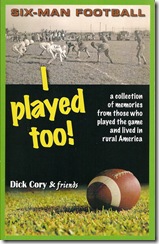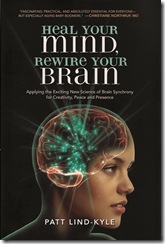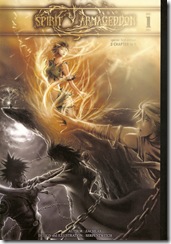
You don't have to be from Nebraska to appreciate Dick Cory's latest, "I Played Too! Six-Man Football: A Collection of Memories From Those Who Played the Game and Lived In Rural America" ($20 in paperback from the author at ubangarang@sbcglobal.net).
Anyone with small-town sensibilities will resonate with "those Friday nights when six did the work of eleven. . . . // farm boys and town boys finding common ground / in August heat and two hundred pounders plowing into / tender flesh and bone . . . seniors teaching freshmen not to whine. . . . " These are the words of Larsen Bowker, one of thirty-six contributors who, writes Cory, "played, cheerled, refereed and were fans of six-man football."
Cory will be signing "I Played Too!" this Saturday from 1:00 - 3:00 p.m. at Chico's ABC Books, 868 East Avenue (Walgreens Center).
In an email, the author writes me that "six-man football was the brainchild of Stephen Epler, who designed football for schools too small, too poor, or too distant to be consolidated to provide eleven-man. While teaching at Chester, Nebraska high school, he staged the first high school game on September 26, 1934."
Cory remembers his own high school days. "Community spirit and pride were wrapped up in the game," he tells me. "This spirit has all but vanished in these mid-America communities, which now resemble ghost towns. . . . Al Darby, who starred at Durham, represents California and Duane Falk played at Stanton, Iowa. All the rest came from Nebraska at a time where participation peaked at 189 teams in 1953, my senior year."
Cory includes a chapter on the rules of the game, one of which says that "When one team is 45 or more points ahead at the end of the first half . . . the game is ended immediately." These were the days before plastic helmets and faceguards.
As Falk notes in his chapter, "My wife tells me that our sports exploits have gotten better with the years. We seem to win more games by wider margins as the years pass by and of course we are instrumental in our team's success." Replete with old black-and-white photographs, "I Played Too!" lets the reader in on some of those stories.


